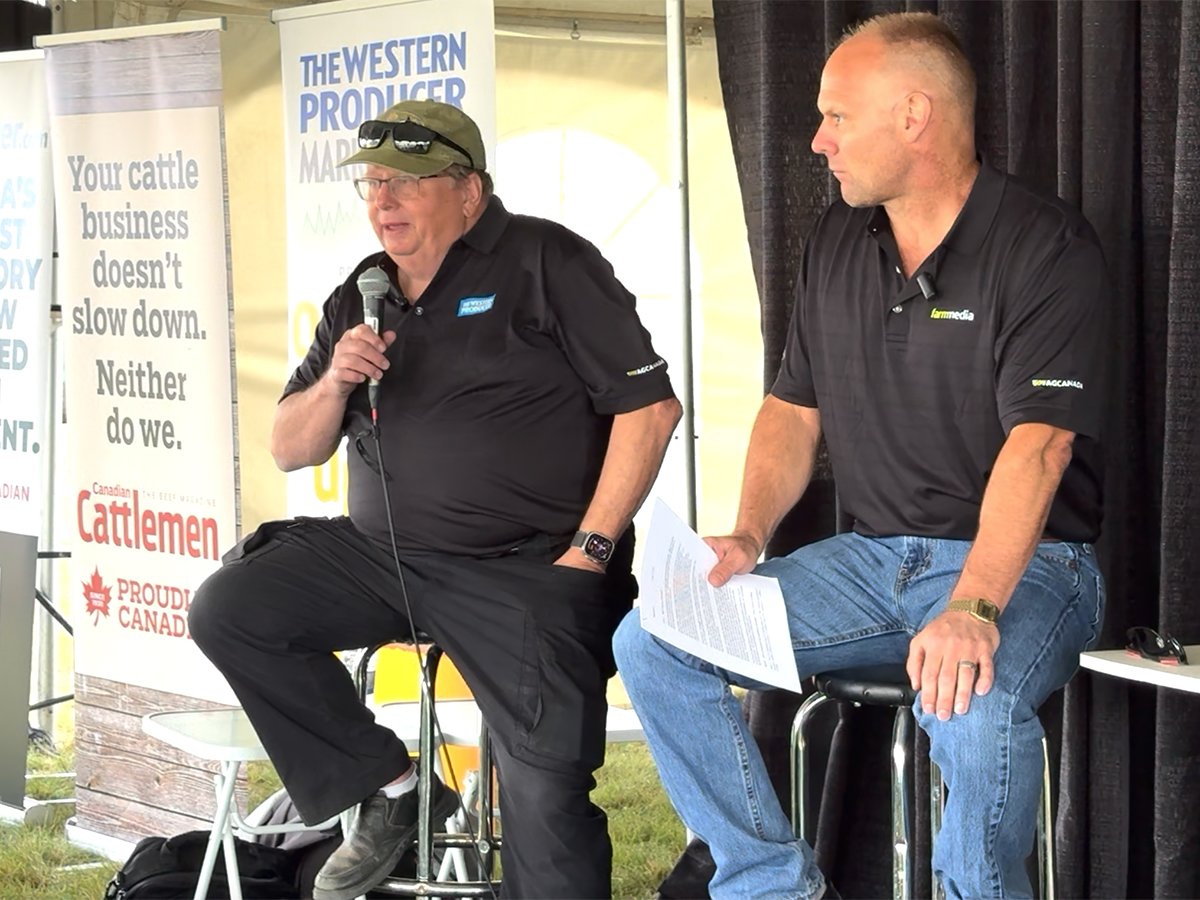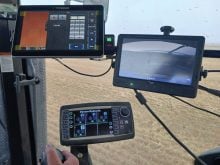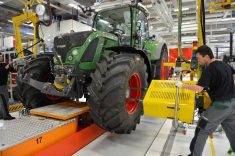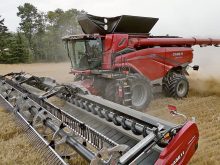The number of questions I have about setting the triple sieve shoe in the older 850 and 860 combines shows that we need to take a look at it.
A unique characteristic about this shoe as compared to other shoes is that it has three sieves, and the top one is in two sections. Anything falling through the top front section goes straight into the clean grain.
Producers getting a dirty sample may want to close this section more, but that causes a problem.
Ideally, the chaff and straw coming off the grain pan is falling onto this sieve, and the easiest place to lift the straw from a sieve is where it is falling.
Read Also

VIDEO: Prairie crops on track for average yields
LANGHAM, SASK. – Western Canadian farmers will harvest an average crop this year provided cooler temperatures prevail and the region…
However, if the sieve is closed, the air that should go through it is now deflected horizontally. No straw will be lifted there.
You need to leave that sieve open on an angle about the same as the path the air is taking from the fan to the sieve. Set the wind board as far down as possible.
Some people have suggested drilling another hole farther down, but if you use that hole, it will create a vortex behind the board and a dead spot in the middle of the shoe. You know you have the right amount of air when there is a nice arc of chaff falling between the shoe and the straw chopper.
Put in the fan dividers if you have a pre-1983 model. They help keep the air spread equally across the full width of the shoe. One symptom of this problem is that you just cannot seem to get the air set right.
Your combine probably came with a kit of different-sized, round-hole screens, and the temptation is to use them. However, it might blow chaff away and all the unthreshed material will fall into the clean grain system.
Set the combine to do the best threshing job possible . You might have to set the concave tighter. You might have to speed up the cylinder. You might have to put in more blanks.
I recommend opening all the sieves while doing this so everything that happens in the threshing area ends up in the hopper.
If you cannot clean up the sample in some crops, which is possible, use the sieve that goes in front of the bottom sieve, but I would recommend the Peterson sieve.
The sieves that came with the combine restrict airflow, and you have to change them for each crop. As well, grain rolls off the front and fills the fan housing. The Peterson sieve is adjustable.
This advice works in any crop but in some cases you might have to lift the wind board a little and cut down the amount of air.
Be careful in canola because it will not blow out any easier than wheat. It is just as heavy as wheat and the kernels are rounder, giving the air less of a chance to grab it. It is carried out in the trash so the trick is to break up the trash by getting a lot of air under it while it is above the shoe. In any combine, you open the cleaning sieve enough so the air can get through to the chaffer and lift the chaff.
Here’s a warning. I used to see farmers open up the short chaffer, thinking that if they could not hold the grain in the combine, they would make sure it would go into the return instead of on the ground. That provided an easier path for the air to follow and the losses increased.
Henry Guenter is a former service manager for Massey Ferguson. Got an equipment question? We’ll do our best to get an answer for you. Contact insidemachines@producer.com.
















